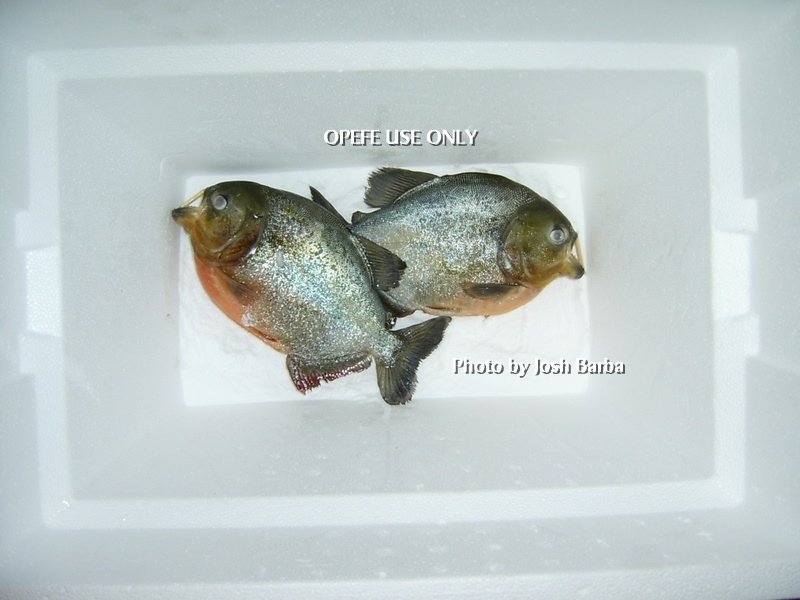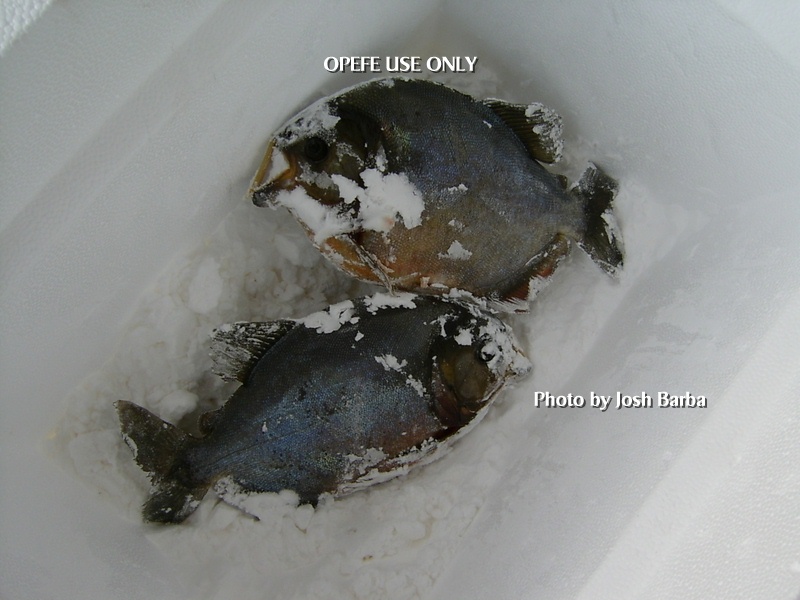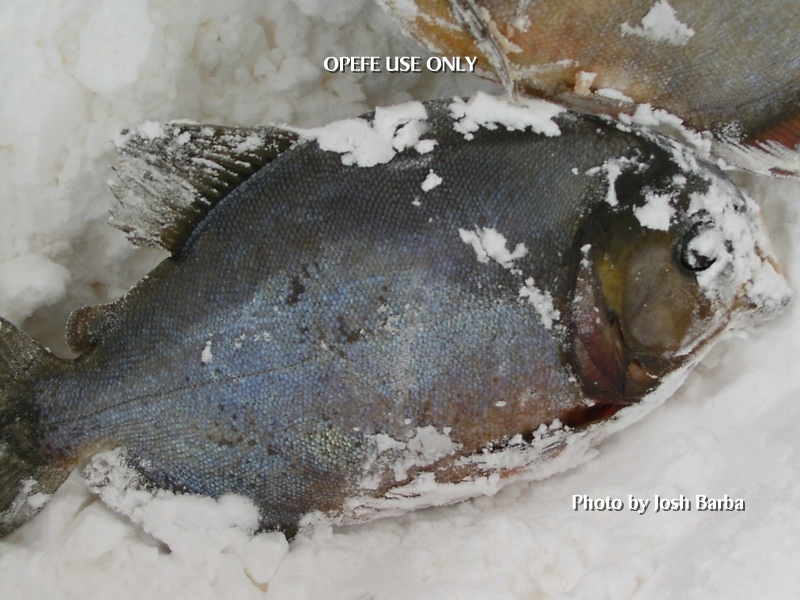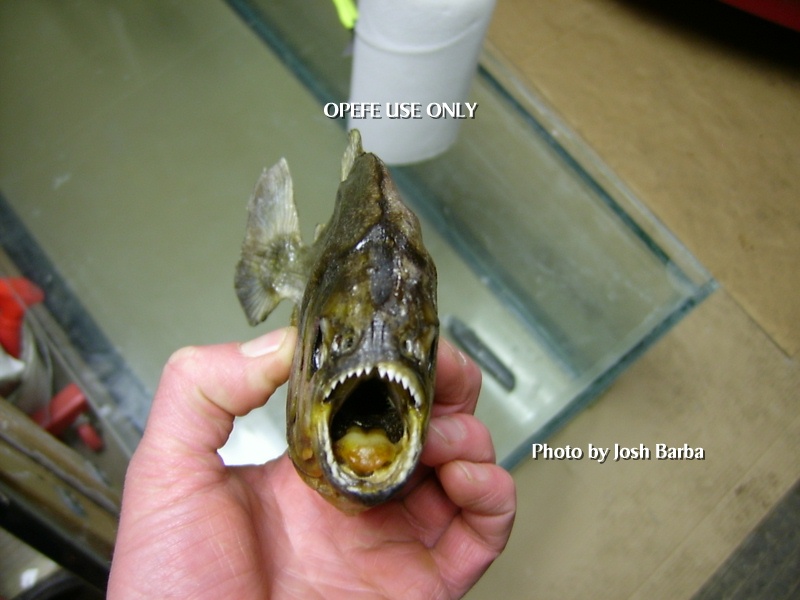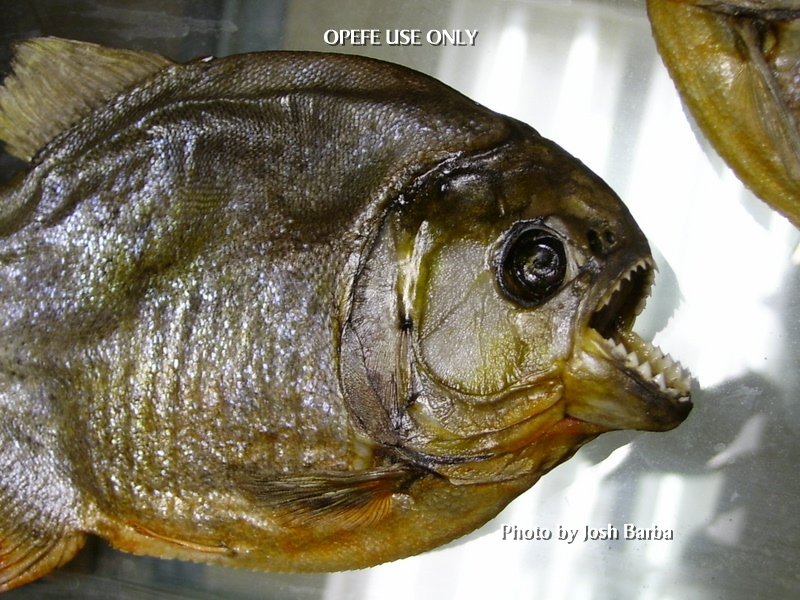PROJECT: Piranha Mummification
by Josh Barba (Missoula, Montana) April 17, 2007
A special thank you to Josh for sharing his information on how to preserve piranhas. Using this method is a safe way of doing it and allows the hobbyist to keep their deceased pet either on a wooden plaque (a fixed) or mounted on a stand. Frank Magallanes, OPEFE.
Image 1: After having debated what I would do with my deceased Pygocentrus nattereri that I had kept in my freezer for a year, I finally came across an article explaining the process of mummifying fish as a learning exercise for children at a school science fair. By using household baking soda, the article explained how it shares the same properties of *natron salt used by the ancient Egyptians in the process of mummification. Being a cheap and effective way of preserving the first of my piranha collection, I figured I would give it a try. This first picture shows my fish thawing out in the kitchen sink. Thawing them out took about one hour.
*Natron is a natural substance that is found in abundance along the Nile river. Natron is made up of four salts: sodium carbonate, sodium bicarbonate, sodium chloride, and sodium sulfate. The sodium carbonate works as a drying agent, drawing the water out of the body. At the same time the bicarbonate, when subjected to moisture, increases the pH that creates a hostile environment for bacteria.
Image 2: I needed a suitable container to place the fish in. So I had an old styrofoam cooler that could be thrown away after use. I layerd a bed of roughly 2˝ inches deep of baking soda in the bottom of the container before placing them in. I used some pieces of bamboo skewer to prop their mouths open. I poured their mouths as full of the soda as possible to aid in drying their organs. Then I buried them completely under baking soda making sure no parts of the fish were exposed to air. This is extremely important, since a lack of air prohibits bacteria from thriving thus no rotting. I used approximately six boxes of baking soda in this step. Then I placed the coolers lid on and left it alone.
Image 3, 4, & 5: Here is what they look like after one week submerged and untouched in the baking soda. At this point, the fish had lost a large amount of moisture from their bodies. The gills and fins were already dried at one week. The eyes have shrunk in considerably. The baking soda that had been in close contact with the fish had absorbed a good amount of moisture that was a brownish color. At this point I decided to replace a good portion of baking soda. Then I submerged them again as before.
Image 6&7: At roughly the three week period, I decided to have a look at the progress. The fish were almost completely dehydrated. You could see their bones under their skin, and they weighed considerably less than before. I gave them one more week until I was satisfied that they were completely mummified. If you knock on their body at this point, the sound should be completely hollow, as if knocking on a wooden box. Then you know the internal organs are dried completely.

